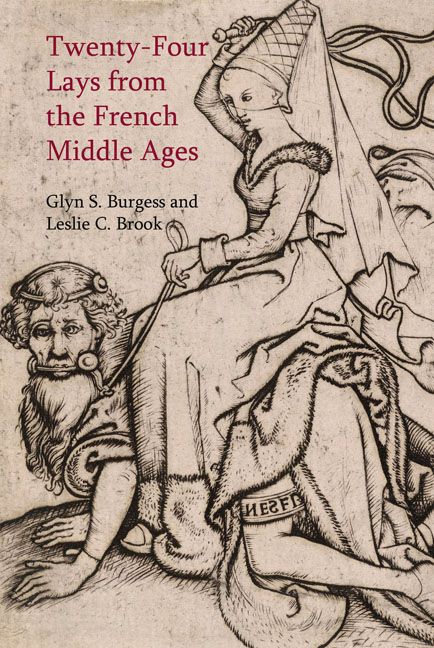20 - The Chastelaine de Vergi
from Romance and Realism
Summary
Introduction
The Chastelaine de Vergi (The Châtelaine of Vergi) is preserved in twenty-two manuscripts. Our translation is taken from MS Paris, BNF, fr. 837, as edited by Frederick Whitehead (his MS C). In recent times this work has often been regarded as a short story or a short romance but there is no reason to deny it the designation of ‘lay’. By the time this poem was written, no doubt well into the thirteenth century, the form and content of the lay had evolved, with fewer non-realistic elements than in earlier examples of the genre. The author is unknown, but Jehan Renart, author of the Lai de l'Ombre, has been suggested.
The tale recounts the tragic fate of two lovers at the court of the Duke of Burgundy. One of the lovers is a knight who frequents the duke's court and is much loved by the latter. The châtelaine is the duke's niece and she has granted her love to the knight on the condition that if he ever reveals it to anyone, it will immediately be withdrawn from him. The knight must make his way to his beloved's dwelling and watch for a little dog running through the garden as a sign that the coast is clear and that he can visit the lady and enjoy a night of love. This arrangement works well until the knight's frequent visits to court bring him to the attention of the duchess who, first with gestures and then with words, attempts to seduce him. Rebuffed, the duchess takes revenge by declaring to her husband that the knight has spent the day trying to seduce her. She convinces the duke of the truth of this by pointing out that the knight does not seems to have a lover elsewhere. This accusation sets in motion a series of tragic events. At first, the duke refuses to accept the knight's protestation of innocence, then he gives him the opportunity to clear himself by naming his beloved (the duke has already noticed that his clothing and demeanour indicate that he is indeed in love with someone).
- Type
- Chapter
- Information
- Twenty-Four Lays from the French Middle Ages , pp. 210 - 226Publisher: Liverpool University PressPrint publication year: 2016



